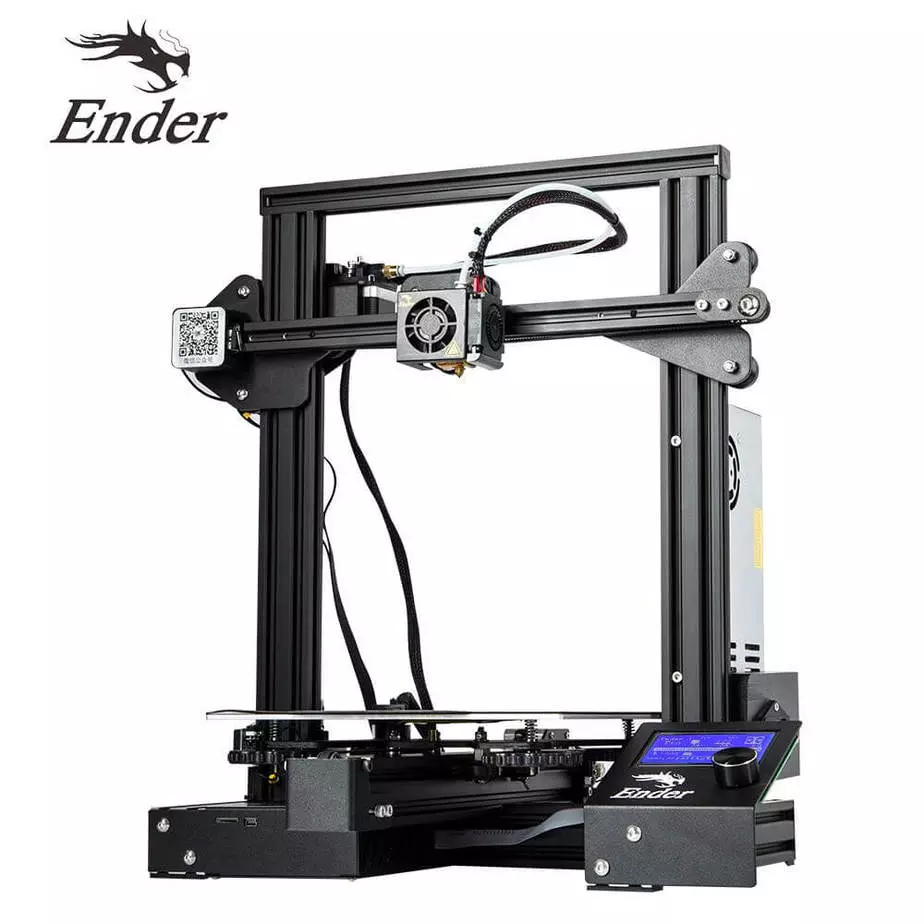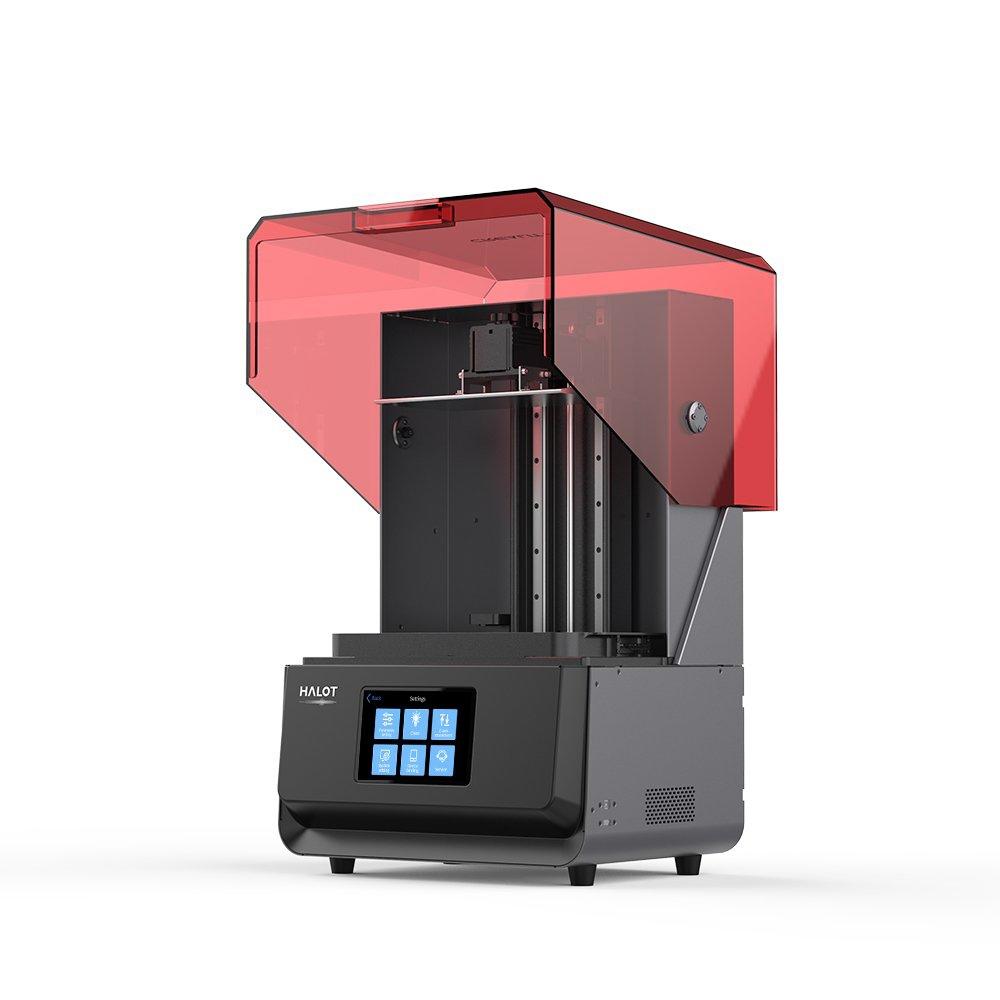Compare Ender 3 vs Ender 3 PRO vs Halot Max
Comparison between the best 3D printers
Choose the best 3D printer at the best price. The cheapest 3D printers are here.
Buy a 3D printer here with 3D Fila.
 |
 |
 |
|
| Model | Ender 3[BUY Ender 3] |
Ender 3 PRO[BUY Ender 3 PRO] |
Halot Max[BUY Halot Max] |
| Printing Material | Filament | Filament | Resin |
| Estimated price | $210,00 | $258,00 | $3000,00 |
| Fabricante | Creality 3D | Creality 3D | Creality 3D |
| Release Year | 2018 | 2019 | 2021 |
| Print Volume [mm] | 220x220x250 | 220x220x250 | 293x165x300 |
| Printer Size [mm] | 440x440x465 | 440x440x465 | 480x387x770 |
| Weight [kg] | 6,62 | 6,62 | 32,5 |
| Power Loss Recovery | NO | NO | NO |
| Maximum Resolution [mm] | 0,1 | 0,1 | 0,03 |
| Processor | 8 bits | 32 bits | |
| Display | Mono | Mono | Display touchscreen 5'' |
| Power Supply | 24V / 270W | 24V / 360W Meanwell | |
| Connectivity | SD / USB | SD / USB | SD / USB / Wi-Fi |
| Operating systems | Windows, Mac, Linux | Windows, Mac, Linux | Windows, Mac, Linux |
| Date of registration in the system | 2021-04-13 | 2021-04-14 | 2022-11-04 |
| Release date | 2018 | 2019 | 2021 |
| Extra features | The Ender 3 V1 is a DIY assembly 3D printer, a sales leader since 2017, standing out for its cost-benefit. With a wide printing capacity, it has a CNC machined structure for precision and stability. It offers high-precision prints with low noise, thanks to its innovative V-profile and pulleys. It has a self-adhesive magnetic platform for easy removal of models and excellent adhesion. The Ender 3 heats up quickly, reaching 100°C in 5 minutes, ideal for agile prints. It includes protection against power failures, allowing you to resume printing after interruptions, saving time and material. | The Ender 3 Pro stands out for its beginner-friendly assembly and easily modifiable structure. With a 350W power supply, it heats up quickly and has a simple application that offers good print quality. However, its motors and fans are noisy, and the interface seems outdated. Assembly is accessible, without the need for advanced techniques, and it has integrated belt tensioners. It includes a detailed guide and supports microSD card and USB. | The Halot Max printer stands out for its large print size (293 x 165 x 300 mm) and uses SLA technology. It has an integral light source for improved accuracy and a strong core with an advanced operating system. Its Z-axis module ensures high precision, supported by efficient slicing software. The machine offers online OTA updates and boasts an adjustable layer thickness between 10 and 200 microns. Its XY-axis resolution is 3840*2160, with 0.05 mm accuracy, and an integral 405nm light source. The printer includes a 5" touchscreen and multiple connectivity options, such as USB, Creality Cloud, and HALOT BOX WiFi. With cutting-edge technology, the Halot Max is ideal for printing small models with uniform precision, thanks to its self-developed lighting system and stable printing mechanism, which includes dual linear guides, ball screws, and an intelligent brake system. |
| Support for multiple colors and materials (AMS and CFS) | NO | NO | NO |
Notes * |
|||
| Cost-benefit | 6 / 10 | 6 / 10 | 5 / 10 |
| Hardware | 0.5 / 10 | 0.5 / 10 | 1 / 10 |
| Screen | . | . | . |
| Print volume | 3 / 10 | 3 / 10 | 3 / 10 |
| Performance | 1 / 10 | 1 / 10 | 9 / 10 |
| [BUY Ender 3] | [BUY Ender 3 PRO] | [BUY Halot Max] |
Conclusion |
| In comparing the Ender 3, Ender 3 Pro, and Halot Max 3D printers, several factors stand out that will help potential buyers make an informed choice based on their specific needs and budget. 1. **Price and Value**: The Ender 3 and Ender 3 Pro both offer excellent cost-benefit ratios, making them appealing options for beginners and hobbyists looking for reliable performance without a substantial investment. The Halot Max, while positioned as a high-end printer, comes at a significantly higher price point, which may not align with the budget of casual users. 2. **Print Volume and Capability**: While all three printers provide adequate print volumes, the Halot Max distinguishes itself with a larger build area, catering to those looking to print larger models or multiple smaller items simultaneously. However, this increased capability comes with a complex feature set that may appeal more to experienced users. 3. **Print Quality and Technology**: The Halot Max leverages SLA technology for superior print resolution and detail, making it the preferred choice for intricate projects where precision is paramount. Conversely, the Ender models, with their FDM technology, offer solid print quality suitable for general 3D printing tasks but may fall short in terms of fine detail compared to the Halot Max. 4. **Usability**: Both Ender models are designed with user-friendliness in mind, especially for those new to 3D printing. Features like beginner-friendly assembly and built-in guides simplify the printing process. The Halot Max, with its advanced touchscreen interface and multiple connectivity options, may cater better to tech-savvy users who appreciate a more modern operating experience. 5. **Performance Stability**: The Halot Max stands out with its robust hardware designed for precision and reliability during longer print jobs, justified by its superior hardware components. In contrast, while the Ender printers provide decent performance, they are more prone to noise and may require adjustments for optimal results. In summary, for users seeking affordability, ease of use, and solid performance, the Ender 3 or Ender 3 Pro offer a compelling choice. However, for those who require high precision and advanced features for detailed projects and who are willing to invest more, the Halot Max presents a leading option in the market. Ultimately, the best printer will depend on the user’s budget, experience level, and specific printing needs. |

